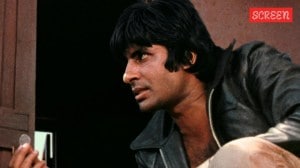Click here to follow Screen Digital on YouTube and stay updated with the latest from the world of cinema.
Sharmila Tagore: Satyajit Ray’s rare find was dismissed from school for being ‘bad influence’, defied threats of bullets to marry outside her faith
Born on December 8, 1944, veteran actor Sharmila Tagore grew up in a joint family of creative minds and achievers. Today, on her birthday, we revisit how her upbringing shaped her into the person she is today.
 Sharmila Tagore made her Hindi debut with Kashmir Ki Kali, opposite Shammi Kapoor. (Express Archive photo)
Sharmila Tagore made her Hindi debut with Kashmir Ki Kali, opposite Shammi Kapoor. (Express Archive photo)“She was younger…but something about the young girl’s eyes told me not to reject her.”
Satyajit Ray couldn’t resist Sharmila Tagore’s eyes when she was just 13 — they asked a lot of questions, and often daydreamed back in 1959. To some, they are reminiscent of ‘Ye chaand sa roshan chehra, zulfon ka rang sunehra, ye jheel se neeli aankhein, koi raaz hai inme gehra’. To others, they still exude the elegance and innocence of Apu’s child bride Aparna (Satyajit Ray’s Apur Sansar). But what remains common is adulation among cinephiles for this beauty-with-brains who defied the Hindi film industry’s and society’s unwritten rules by choice, not necessity.
Umang Sabharwal, the director of Starring Sharmila, a documentary on the actor, called her “casually rebellious” and “extremely intuitive”. A glance through her choices of roles — Devi (1960), Kashmir Ki Kali (1964), Amar Prem (1972), Aradhana (1969), Anupama (1966), Mausam (1975) — justifies his statement. It wasn’t a regular thing in the 1960s for a female actor to straddle mainstream and art cinema with as much ease and finesse as Tagore did.
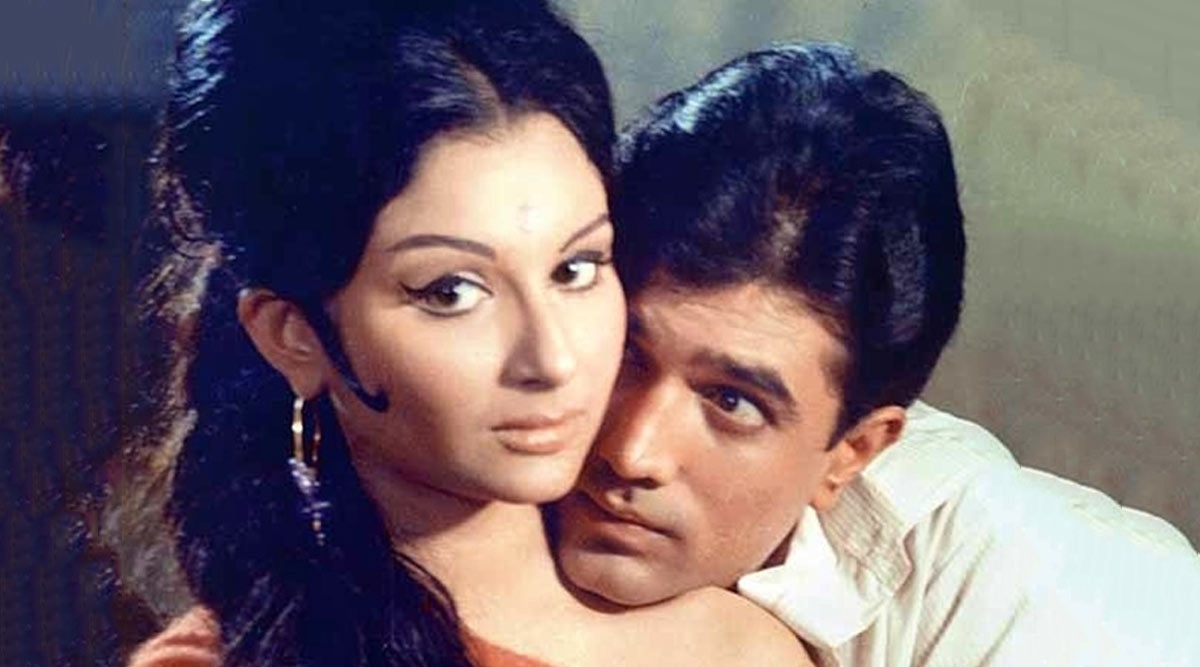 Sharmila Tagore and Rajesh Khanna first appeared together in Aradhana.
Sharmila Tagore and Rajesh Khanna first appeared together in Aradhana.
When “precocious” at 13 Tagore made her acting debut after being discovered by Satyajit Ray, her ‘mental condition’ was similar to her character Aparna’s. “She had no idea what was behind the closed doors and in a way, I had no idea what films were all about. My mental condition, agewise and situationwise, were exactly the same as Aparna’s,” she said in an interview with DD. But once she entered, the actress created a niche for herself, not only on the screen but off it too.
Living in a hotel alone during the early days, unchaperoned, discussing with the directors about her role and being headstrong about how she wants to look on-screen, wearing a bikini for a magazine cover “unasked”, dating and living-in with a cricketer before engagement, achieving accolades in career after marriage and three children, was unheard of any heroine of her time. Today, we have a whole bunch of actresses (Anushka Sharma, Kareena Kapoor Khan, Kiara Advani, Katrina Kaif, Kangana Ranaut, Alia Bhatt) living life and managing careers on their terms. They should remember Tagore got there first, with utmost dignity and civility.
Born on December 8, 1944, to Gitindranath Tagore, a general manager in the British India Corporation, and his wife Ira Tagore, Sharmila Tagore grew up in a joint family of creative minds and achievers. She was related to Rabindranath Tagore whom she called the “north star” of the family and her grandfather Gaganendranath Tagore brought cubism to India. His brother Abanindranath Tagore was the principal artist and creator of the Indian Society of Oriental Art. His paintings find a place at the Louvre (in Paris).
 Sharmila Tagore in a still from Apur Sansar
Sharmila Tagore in a still from Apur Sansar
“Tagores are a very eclectic lot, hugely inspired by Japanese art etc. Everyone was creative in some way or another,” said Tagore, as she traced her inclination to get into a creative field back to her family background. If Ray had not spotted her, she would have gone to Shantiniketan and learnt dancing. “Just by listening to the conversations around me, I learned so much,” she added about her childhood.
A bright student at school, she was heartbroken when the principal of Kolkata’s St John’s Diocesan School forbid her from coming to the school as she would be a “bad influence” on others as she had joined films. Her father tried to make the principal change her mind, but it didn’t make a difference. That is when he ‘grandly’ proclaimed, “It is a huge honour and he would prefer his daughter to be part of a Ray film than carry on in a school which did not appreciate this.” But for a 13-year-old to leave her friends and school was tough. She was later admitted to a English medium school, but the transition to a new language was quite “traumatic”. “I used to hide from people at school to avoid conversations in English,” the actor told Scroll.
There was some relief when Ray called her to star in Devi (1959), a film that presented a commentary on blind faith and rationality, during her summer vacation. Then, only 14 years old, Tagore delivered her “favourite performance” in the film.
After being a household name in Bengal with five Ray films and a renowned name in the Bengali cinema, Tagore’s skills and beauty found perfect representation in the Hindi cinema. “I went to Mumbai because I wanted to be economically independent. Actors were poorly paid in Kolkata,” she was quoted as saying in Ray’s biography.
Filmmakers like Hrishikesh Mukherjee and Shakti Samanta gave Tagore iconic films: Amar Prem, Aradhana, Chupke Chupke, An Evening in Paris, Kashmir Ki Kali, and Anupama. All of them not only gained critical appreciation but also established Tagore as an actor who can be demure without being spineless. Initially, critics only wrote about her cateye makeup, the bouffant, and her gorgeous costumes, it was with Mukherjee’s Anupama (1966) that her acting prowess found a conversation. “I didn’t want to just be a glamour girl, that wasn’t really me. I wanted to do more,” Tagore noted during an interview with Karan Thappar.
But while approaching directors for more meaningful roles, Tagore never compromised on what she wanted. Samant recalled her being “stubborn” from the very beginning. “I understood she is quite talented but I also learnt that she is stubborn. She used to fight a lot,” the filmmaker shared while narrating how she refused to grey her hair to play the part of Rajesh Khanna’s mother in Aradhana. Mukherjee also had a similar experience when she refused to let go of the bouffant in Anupama.
“Looking back, I argued with everyone about everything. Nothing was accepted at face value. My favourite question was, ‘Why?’ I was a bookworm, always reading. When I was asked to do something, I needed to know why. ‘I told you so’ wasn’t enough for me,” Tagore had shared about her younger self during an interaction with Filmfare. It was because of this rebellious attitude that she left college after the principal asked her to choose between films and academics. “I had a big fight with her. I challenged her that one day I will not only know English literature and history but also make more name than the college. I threw my books and left the college dramatically,” she recalled in one of her interviews.
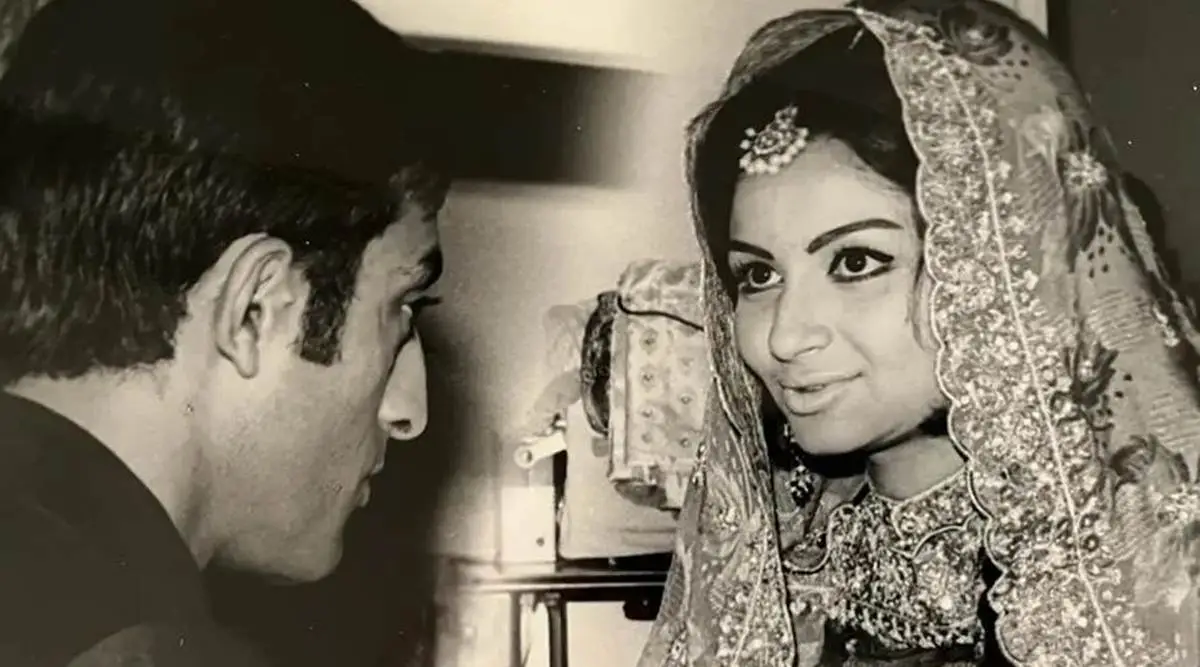 Sharmila Tagore and Mansoor Pataudi got married in 1968. (Photo: Saba Pataudi/Instagram)
Sharmila Tagore and Mansoor Pataudi got married in 1968. (Photo: Saba Pataudi/Instagram)
Tagore played her innings in films with utmost honesty. But, in her own admission, she was “slightly wild” after she moved to Mumbai following Kashmir Ki Kali. She lived in a five-star hotel alone, which cost her Rs 275 per day in those days, and went out for parties. She also created a storm with her bikini magazine cover in 1967. Various publications blurted headlines like “Sharmila shocks India in scantiest bikini”, “First Indian Film Star Dares to Bare”, “Cover Girl or Uncover Girl”.
“I did it unasked. I was looking nice,” she told Barkha Dutt in a recent interview. While there was strong disapproval around it, her then-boyfriend Mansoor Ali Khan Pataudi nonchalantly said, “I’m sure you are looking very nice.”
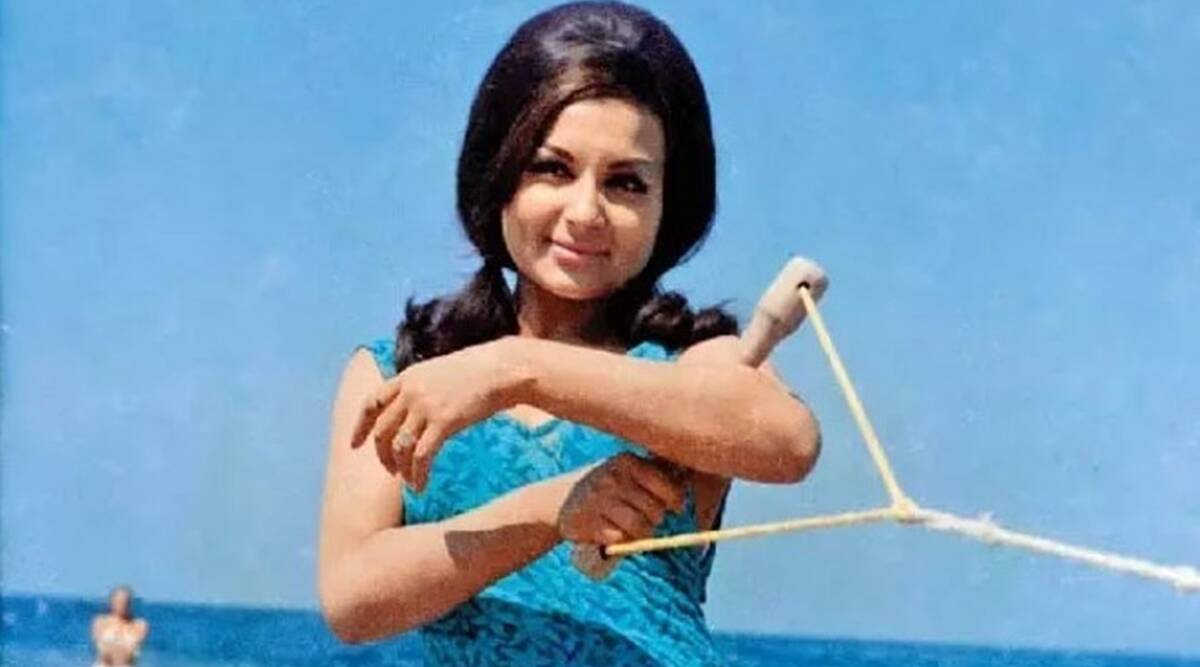 Sharmila Tagore in a still from An Evening in Paris. (Photo: Express Chawla)
Sharmila Tagore in a still from An Evening in Paris. (Photo: Express Chawla)
As filmmaker and scholar Sohini Ghosh points out in the documentary Starring Sharmila, unlike her contemporaries, Tagore lived by modern values outside the film set as well. “I was told heroines don’t dance. They dress in a certain manner, they don’t do a lot of other things that other normal people do in their lives, which is very inhibiting. I wanted to be my own age, and for me to be of my own age and to have my freedom, was important,” the actor mentioned in an interview.
Sharmila Tagore was not starstruck by celluloid men, film premieres, festivals or glitzy parties. But she was obsessed with cricket, much like her mother, “I was completely cricket-mad much before I met Tiger (her late husband), actually.” After she met him at a party in 1965, she fell in love. Pataudi had candidly revealed during a chat with Simi Grewal that it was Tagore who made the first move. She also admitted she did “crazy” things in love, one of which was going with him for a tournament unplanned, “Once I went to say him bye at the airport. He offered, ‘Why don’t you come along?’ and I went with him, with no clothes or anything.”
During their courtship, Tagore realised, “He felt so okay about himself – and me – and us – in all circumstances! I’d never had this chance before to be myself…impetuous, even adventurous.” She married the cricketer amid much opposition and threats, to the effect of “bullets shall speak” in December 1968 and changed her religion too. It is not just today that a cricketer’s wife (Anushka Sharma) is blamed for his poor performance. She said in one of her interviews, “We used to sit with the crowd, it was slightly cordoned off. I think Tiger dropped a catch and my father actually screamed and said, ‘You shouldn’t have kept him up all night!’”
Though her decision to marry and have kids at the peak of her career was met with criticism, including some suggesting her marriage wouldn’t last a year if she continued working. She shut the naysayers by continuing to act and her husband enabled her growth by being supportive. In fact, the actor gave the rare gems, Gulzar’s Namkeen and Mausam, after her marriage. She won a National Award for her no-holds-barred performance in Mausam. She took her mother-in-law Begum Sajda to the theatre to watch Mausam, who was duly impressed by Tagore’s role of foul-mouthed shrewish prostitute.
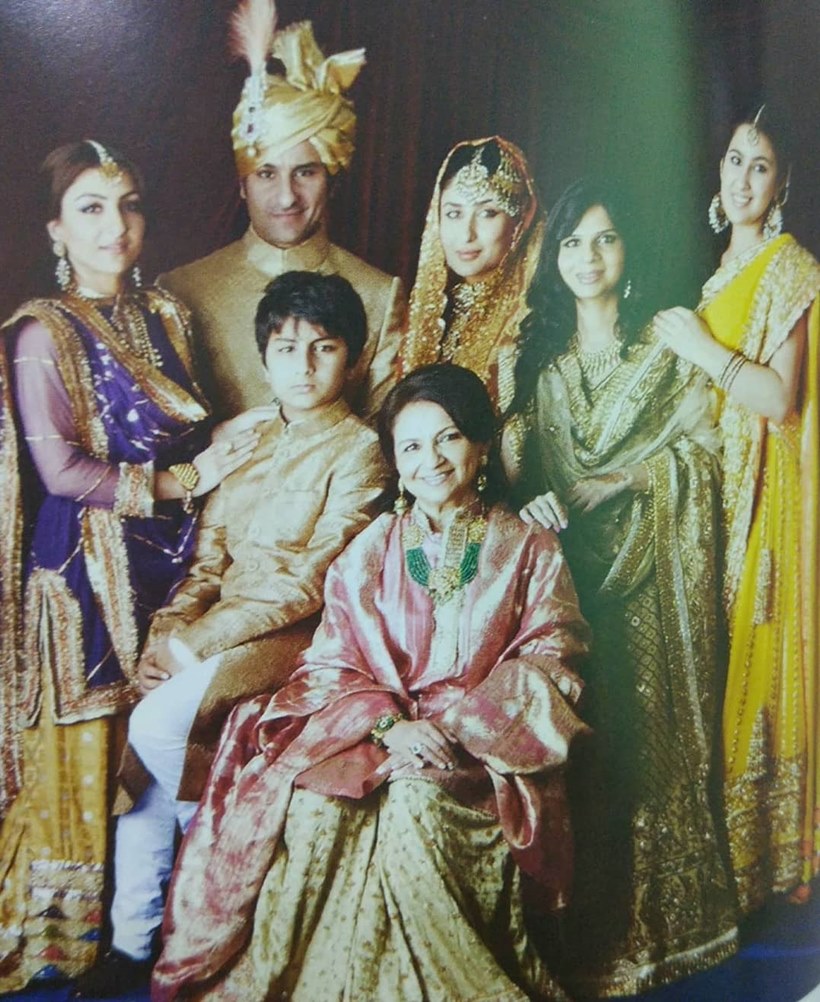 A family portrait of the Pataudis. (Photo: Saba Ali Khan/Instagram)
A family portrait of the Pataudis. (Photo: Saba Ali Khan/Instagram)
Being a royal wife, she also adapted to the ways of Pataudi but only after some years of marriage. She told Simi Grewal, “We bunked for a while and we stayed in Bombay, had three children and then we went to Delhi to live with my mother-in-law. By that time, we had adjusted. It was difficult because it was different and one had to learn quite a lot.”
Sharmila Tagore continues to be a role model for many women today. She is the one who inspires them by example, one of whom is her daughter-in-law Kareena Kapoor Khan. Kareena had written in her book, “My mother-in-law was among the first to tell me that I had to keep working. Her advice was to do whatever I wanted but with confidence. She did some great work in the movies after her marriage and kids and was a real inspiration.”
Sharmila Tagore, now 79, lives in Pataudi, where her husband is buried as she “don’t [doesn’t] feel like leaving Tiger here.” She occasionally visits Mumbai where her three children — Saif, Saba and Soha — live with their families. She is still trying to become a better version of herself by gathering as much knowledge as she can and plans to do films only if the script interests her and the role is not stereotypical. But to her many fans, she will remain timeless.


Photos
- 01
- 02
- 03
- 04
- 05
















